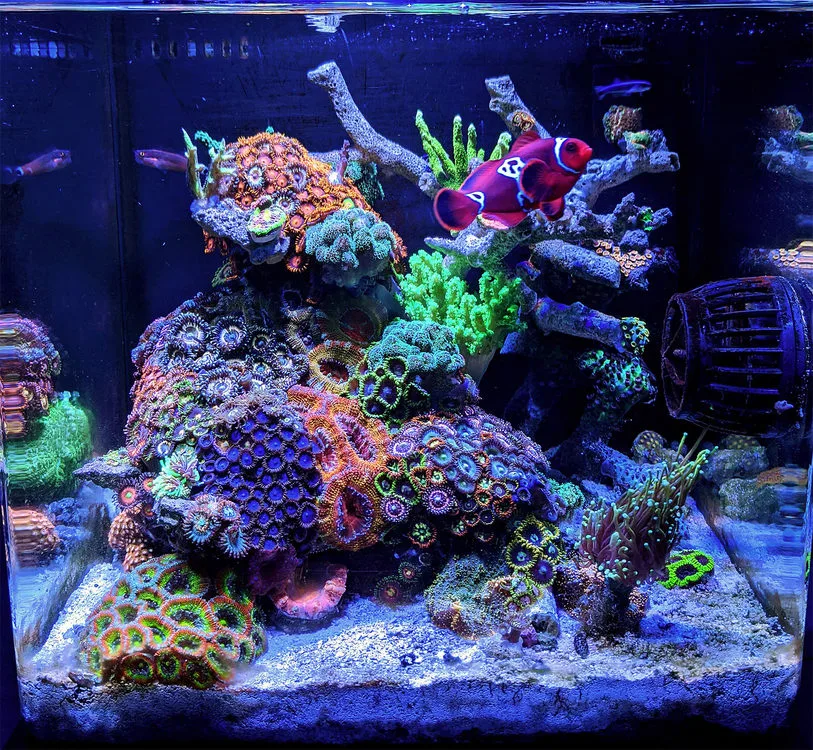Stunning 8-Gallon Reef Tank – Illumin-8's TOTM | NanoReef

Tank Specifications
Volume: 8 Gallons / 30 Liters
Dimensions (L × W × H):
11.8" ×
12.2" ×
12.2"
30.0cm ×
31.0cm ×
31.0cm
Equipment List
- Salt: Tropic Marin
Frequently Asked Questions
What type of rock and sand do you use in the tank?
I use Zombie rock, which is old, dry live rock sourced from my backyard, along with 2 inches of CaribSea Fiji Pink Live Sand.
What lighting system do you recommend for a nano reef?
I use an Ecotech Radion XR15w G4 Pro at 40% peak brightness and 27% peak intensity with a 9-hour light cycle, which has significantly enhanced coral growth.
How do you manage water temperature fluctuations?
I use a Finnex 50W digital heater along with a clip-on double fan for cooling, managed through a Neptune Systems Apex Jr. controller that provides redundancy for temperature safety.
Can you explain your circulation setup?
The tank has an Innovative Marine AIO return pump rated at approximately 300GPH alongside an Ecotech VorTech MP10 positioned at 2 out of 12 on the Reef Crest flow setting.
How often do you perform maintenance and water changes?
I perform a 1-gallon water change weekly, or 2 gallons if vacuuming sand. Additionally, light cleaning and maintenance tasks are spread throughout the week.
What is your feeding schedule?
I feed the tank every other day, using a combination of broadcast feeds and hand feeds. Broadcast feeds include 1/16 teaspoon of Reef Roids and 1/8 teaspoon of zoanthid food, while I hand feed using thawed mysis shrimp.
How do you feed your LPS corals?
I carefully hand feed one cube of small Mysis shrimp using long tweezers, targeting LPS and making sure my clownfish is satisfied.
How do you monitor salinity and water parameters?
I check salinity monthly using a calibrated refractometer, aiming for a specific gravity (SG) of 1.024 to 1.025. Additionally, I rarely check other parameters like phosphate, alkalinity, and calcium—usually only about once per year using Hana checkers.
What are your most recent water test results?
As of October 2019, my water parameters tested as follows: Phosphate 0ppm, Alkalinity at 75ppm (4.2 dKH), and Calcium at 495ppm.
How do you ensure coral health in your nano reef?
Coral health is maintained by using a good lighting system that promotes growth, along with regular feeding and water quality maintenance. I also adhere to a proper water change routine.
What fish species do you have, and how do you care for them?
Currently, I have a Lightning Maroon Clownfish, a Tail Spot Blenny, and a Neon Blue Goby. They are fed a mix of mysis shrimp and flake foods and are monitored for health and behavior.
What considerations should I take when setting up a nano reef?
Consider the size of your tank and the type of livestock you want to keep. Also, choose equipment that fits your needs, and ensure stability in water parameters through good housekeeping and regular maintenance.
How much automation is beneficial in a small reef tank?
Automation, like using an ATO for freshwater top-off and temperature controllers, can significantly reduce the risks of erratic parameters and keep the environment stable.